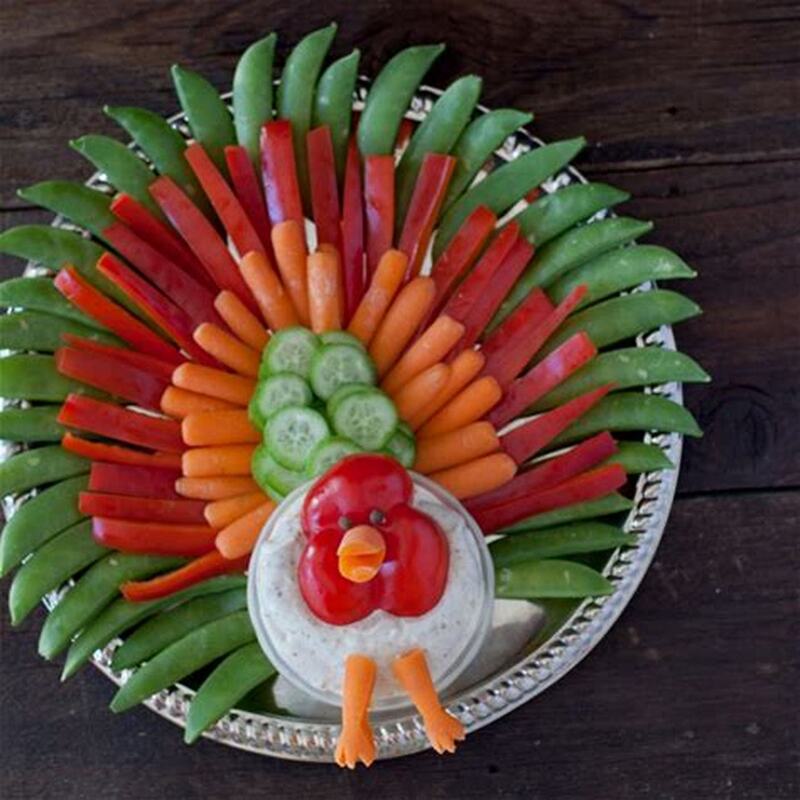|
Mealtimes can be tricky on the best of days. It can be difficult to schedule around family extracurricular activities and trying to choose a meal that everyone will eat, let alone try to make something healthy. And, if you add in a picky or resistive eater in the family, the challenge can be even trickier.
Holidays can be even trickier when adding in foods that may not be familiar; visiting relatives with assorted beliefs and values; the extra noise of a football game, parade, or movie; or people in and out of the house trying to get the best deal possible for holiday gifts. It can be sensory overload for the average adult, let alone your child with sensory issues. During a holiday that centers around food, what are some strategies that could make the day more enjoyable for everyone, including your child with sensory processing differences and/or food difficulties? Below are a few suggestions that could make the holiday more manageable. Test runs It is almost guaranteed there will be some unfamiliar foods offered at Thanksgiving that your child will be hesitant to try. If you are worried about how your child will react to a food, consider sampling some of the foods prior to Thanksgiving at home so you will have an idea of what foods will work, will probably work, or absolutely won’t work. Rethink your idea of “trying” There are so many sights, sounds, and smells associated with Thanksgiving that it is easy to become overwhelmed by the holiday. Consider re-thinking what a successful meal could look like this holiday season. The goal could be to have your child experience a food, not necessarily eat it. Success may be having your child experience and/ or interact with the food using their other senses. Consider ways in which your child can help in the kitchen in age-appropriate ways. Have them tear lettuce leaves for a salad or use a food chopper to prepare food. Are they old enough to stir the gravy? At the end of the meal, consider asking them to help with washing the dishes. Helping in the kitchen allows them to see, smell, touch the foods, so they can experience them, even if they are not ready to try them yet. You can modify the experiences with a mask or gloves if it is too overwhelming. Ambience, please! Mealtimes, especially at the holidays, can be chaotic, with all the preparations, people moving about, and maybe the football game being left on. It is a lot of sensory input that can cause your child to feel dysregulated and overwhelmed. Consider how to provide a more relaxed atmosphere for a calming influence with less distractions during the meal. For example, classical or smooth jazz can provide a more relaxing input than pop or rock music. Consider lowering the lights. Also, consider turning the television off to decrease distractions. Have a seat! Consider your child’s chair at the table. Correct positioning is 90 degree angles at the hips, knees and angles. And, feet should always be supported by a solid surface to prevent discomfort and to provide grounding, so your child feels safe at the table. If your child needs to move, consider wiggle seats or a fidget for them to use. Have at least one food everyone will eat Traditionally, Thanksgiving incorporates a lot of soft or mushy texture, such as casseroles or creamed corn that can heighten the gag reflex and increase unexpected behaviors at the dinner table. Consider having at least one food option that everyone will eat, such as goldfish crackers, served in a nice, big serving bowl, like all the other foods being offered. It promotes a feeling of inclusion, which could make your child feel more welcomed at the table. Also, serving a meal family style can slow down the pace of the meal. It gives your child the option to say which foods they will or won’t try and to gauge how big or small of a portion they want. These are just a few suggestions of ways to relieve the stress of mealtime at Thanksgiving or any holiday. Your therapist at Life Span Occupational Therapy can provide other suggestions that will be more specific to your child’s needs. Feel free to check out the resources on our website or our Pinterest board for more helpful ideas. Remember pushing food on children can be traumatizing, do no harm, go at their own pace, make food experiences a safe and fun activity. 30+ Super Cute Thanksgiving Recipes for Kids - In the Kids' Kitchen (inthekidskitchen.com)
1 Comment
Fall Activities The sun is setting sooner. The weather is getting cooler. The leaves have just started to change colors. Fall is in the air! It is such a sensory rich season. From the sound of leaves crunching underfoot to the smell of hot apple cider, there is so much to experience and enjoy with your child, whether you want to be inside or outside. It is the perfect time to create memories while building sensory motor skills doing some fall-inspired activities. Kitchen activities There are many benefits to cooking with your child. They learn the importance of paying attention, following directions (either by reading the recipe or listening to an adult provide directions). Sometimes the recipe does not go as planned, which can help with developing problem-solving skills. For the physical demands of cooking, both sides of the body need to work together for mixing, chopping, pouring ingredients into a bowl. Plus, your child can increase hand and arm strength. There is the pride that comes from successfully completing a recipe that the entire family can enjoy! Here are some links to fall cooking activities to do with your child. Cooking With Kids - The OT Toolbox 20 No-Bake Recipes For Kids | Healthy Snacks & Treats | Busy Little Chefs 35 Healthy Apple Recipes for Kids (mylittlemoppet.com) Indoor activities Between the change in the weather and school starting, Fall is a big time for changes. This may be when your child is looking for something familiar and comforting. Time spent at home, with favorite blankets, pillows, stuffed animals, and family can provide that stability. Making a pillow fort or indoor obstacle course to work on building planning and problem-solving skills. Crashing into pillows can provide a safe way to get out some energy. And the input provided to your child’s body can help with regulating their bodies and prevent emotional outbursts. A favorite blanket or stuffed animal can create a positive sensory experience from the familiar texture and, possibly from the familiar smells associated with them. Enjoy the leaves Even when a day is cold and gray, the colors of fall can be stunning. There are so many things that can be done with leaves. A walk through the leaves can include an I spy activity or scavenger hunt. Can you and your child find a red leaf. How many yellow leaves do you spy? Are the leaves more rounded, or are they more pointed? Leaves are also very sensory. How does it feel to jump into a pile of leaves? How do the leaves sound when you step on, or walk through, them? Leaves can also be great for art projects, which addresses attention, problem-solving, hand strength. The opportunities for Fall learning and fun are endless, from hayrides to apple picking to carving pumpkins, and more! Here are some links for Fall activities you can do with your child: 30 Fun Fall Activities For Kids - Shannon Torrens Fall Bucket List for Toddlers and Preschoolers - Busy Toddler 10 Fall Activities For Teens To Make This Season Memorable • Parent CabinParent Cabin https://www.instagram.com/p/CiPrbvRNW_8/ As always, the staff at Life Span Occupational Therapy are always brimming with ideas to share with you and your family. Feel free to ask for other Fall activities that can be particularly beneficial for your child. Visit our Pinterest page for more ideas and activities www.pinterest.com/littlewat1/life-span-ot-ideas-peds-and-adults Jenni Christensen COTA/L Can you believe it? It feels as though summer vacation just started, and now we are almost halfway through August. It is time to be getting ready for school to start again. Last-minute summer activities are happening. Schools are making supply lists available. The back-to-school sales are in full swing.
Whether you child is starting school for the first time, changing teachers or schools, or returning to a familiar teacher, the start of a new school year signifies change. It can be exciting, but also frightening. Your child may be scared, anxious, or resistant to start the new school year. What are some things that can be done to help ease the transition from summer vacation to school time? Below are a few suggestions that may make the transition smoother. Unstructured to Structured Day Summer may be a time of fewer commitments with less need of a schedule. Often morning and nighttime routines are more relax or completely set aside. School means waking up and going to bed at a regular time to ensure your student is at school on time and rested enough to perform at his or her best. Once at school, your child has a regular class schedule with regularly scheduled breaks and meals. You can help your child prepare for this change by gradually shifting waking up and going to bed to more regular times, as well as trying to have meals at or around the same time each day. Try moving scheduled activities at home by 10-15 minutes each day until your child’s schedule is similar to a regular school schedule. Morning and nighttime routines This can be tough for many adults, let alone for children. However, the day can start and end better when it is clear what needs to be done to successfully get from bed to school or to transition from school back to bed. A written or picture schedule can be a very helpful tool. And the occupational therapy practitioner can assist parent and child with creating a schedule and break it down into steps that are manageable for the family and child. Once a schedule is created, practice is key to making the day go smoother. Visit the school Check with your student’s school about the possibility of visiting the school, so your child can learn where their classroom, lunch room, gym, and even recess areas are. Knowing what the school looks like and where things are can help ease any fear or anxiety your child may face regarding the upcoming school year. Meet the teacher and school administrators Not only can it be helpful for your child to know who the teachers and other school personnel are and reduce anxiety, but it is also helpful for you, the parent, to talk to them. Give then some insight into the strengths and struggles your student may experience, as well as things that have worked in the past to help your student succeed. Does your child struggle with strange smells, bright lights, or being in crowds? Is it difficult for your child to transition from one activity to another? With your input, they can develop a plan to facilitate improved school participation, academically and socially. Ask them to let you know, after the first few days, how things are going. Open the lines of communication with the school. The staff want to see your child succeed in school. They will appreciate your insight, so they can implement a plan that will create the best school experience possible for your student. Choose comfortable clothes Give your child the opportunity to choose clothes that are comfortable to wear to school. Make sure they are washed, so they are as soft as possible. Things like tags can be very itchy. So, if they are uncomfortable for your child, go ahead and remove them or puchase tagless clothes. Then, have your child wear them before school starts to make sure they are comfortable enough and will not be a distraction during the school day. There are so many distractions and potential anxiety-inducing incidents that can happen in everyday life and at school. There is no single “fix” for every child. Preparing your child for the upcoming transition and being open with school staff about your concerns can go a long way towards facilitating a successful transition to the new school year. We are here at Life span OT to advise and support you and your child. Jenni Christensen COTA/L
Here at Life Span Occupational Therapy we encourage learning through play for all ages but especially younger children. . There are many great toys that can help facilitate this learning at home. With Christmas right around the corner, we wanted to send out some useful information about learning through play and how to choose toys that will best assist your child's learning at home. Attached are some articles from The American Occupational Therapy Association (AOTA) and some links to some of Jacqueline's favorite websites to find play therapy toys. www.aota.org www.youngexplorers.com www.socialthinking.com www.abilitations.com www.funandfunction.com www.hearthsong.com www.lakeshorelearning.com www.therapro.com www.beyondplay.com www.specialneedstoys.com We hope this information is helpful for you and we wish you a Merry Christmas and Happy Holidays! Jacqueline Watson OTR/L
|
Archives
November 2022
Categories |
||||||||
Our Company |
Services |
Resources |
Contact InformationScheduling: 360 970 4778
Fax: 360 918 8274 Email: [email protected] Clinic: Phone and Fax 360 915 6067/alternative fax: 360 918 8274 Email: [email protected] Hours: Monday - Thursday 8am-8pm, Friday 8-6pm Saturday by special appointments only. Address:1240 Ruddell Road SE, Lacey, WA 98503 |
© 2023 Life Span Occupational Theory | Sitemap
Site powered by Weebly. Managed by FreeLogoServices.com
Site powered by Weebly. Managed by FreeLogoServices.com




 RSS Feed
RSS Feed
